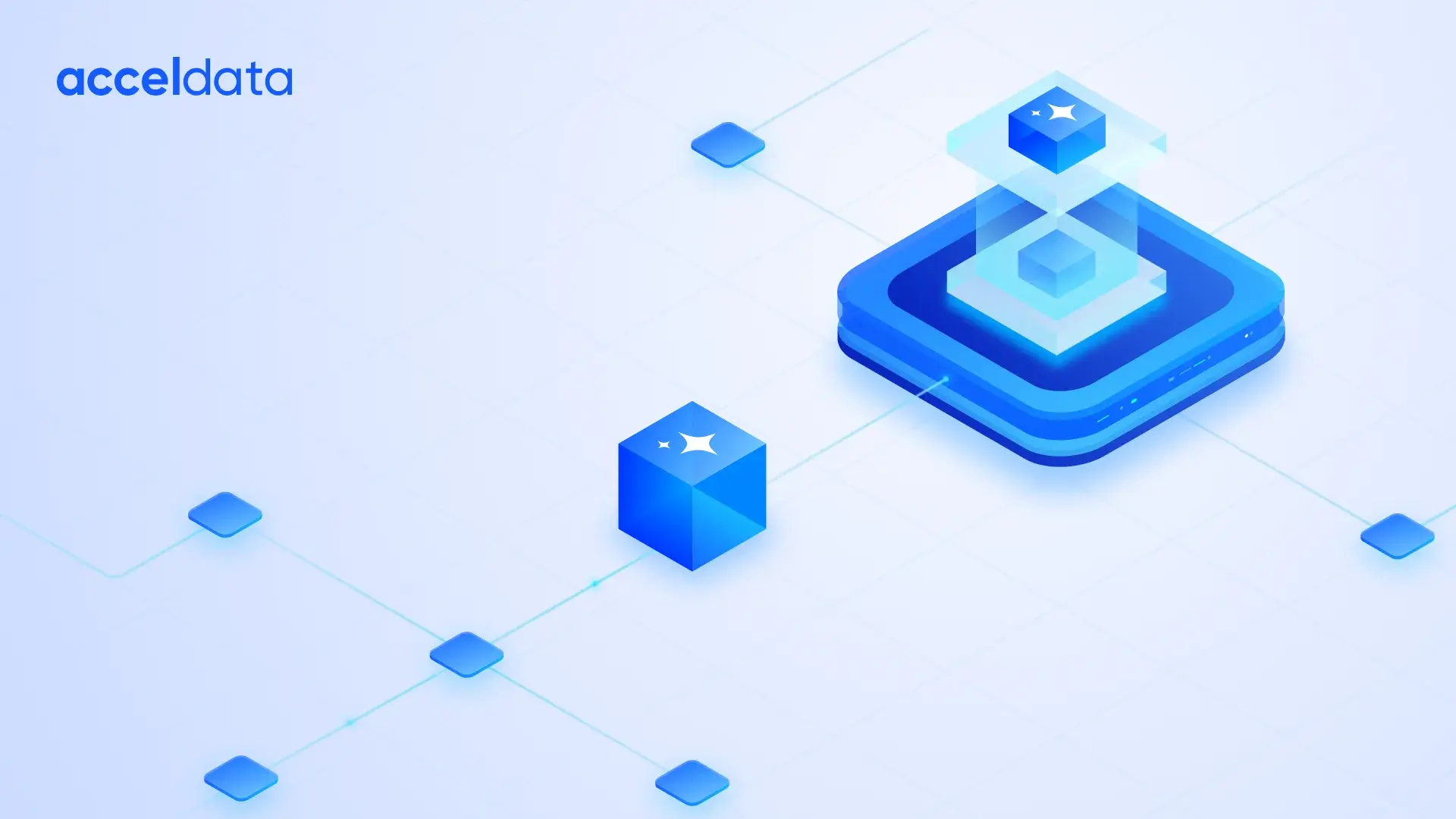Despite surviving for over 500 years, the Finserv market is currently at a metaphorical crossroad. With the onset of the COVID-19 pandemic, coupled with a looming recession, financial institutions can either adapt to evolving trends or step aside for aggressive competitors to take the reins. Adding to the disruption, the emergence of neobanking is shaking up the industry and challenging traditional banking norms.
Apart from liquid assets, banks are flush with another commodity: data. This data can be in the form of operational data, transactional data, social media sentiments or even customer satisfaction metrics. Whatever the form, financial institutions can gain critical, data-driven insights into their processes, product market acceptance and overall risk by analyzing this existent information.
How can data help Finservs drive growth and improve profit margins?
On the surface, improved experiences across the banking journey directly translate into increased customer retention, which roughly means more revenue! Apart from impacting CX scores, data plays a role in helping banks optimize processes, eliminate redundancies and mitigate risks that result from human error.
Artificial Intelligence (AI) isn’t just a buzzword anymore! By harnessing actionable insights from various intelligent analytics tools, enterprises today are reducing lags and boosting performance. With an efficient data pipeline, banks can learn more about their operational inefficiencies and clean up their act.
Global banking players are investing heavily into future technologies, with Artificial Intelligence (AI) emerging as the biggest bet. In 2021 alone, JP Morgan committed over USD 12 billion for innovative tech, and AI was at the forefront of this investment.
So, how are banks leveraging data to emerge from their self-induced slump?
Credit Risk Evaluation
One of the main pain points of the COVID-19 pandemic was the seismic rise in Non-Performing Assets (NPAs) and Non-Performing Loans (NPLs). Russia leads the pack with an NPA ratio of 8.3%, and India follows next at 5.9%. Even after banks removed the pandemic moratoriums, delinquency rates continued to pile up as a result of unemployment rates, business foreclosures or declining returns on investments. With the right type of qualitative customer data, banks can mitigate lending risks by awarding loans to individuals and establishments that fulfill repayment criteria. By monitoring collections and analyzing credit score trends, banks can reduce NPAs/NPLs and boost profitability.
Treasury Management
Improper or irregular financial risk management can lead to the banking institution being declared insolvent. Treasury management is broadly classified as the governance of a bank’s liquidity to mitigate a plethora of risks. Data associated with the disbursement of loans and other investment activities can help banks predict liabilities and balance them against revenue generated across interest-based assets. This enables the financial enterprise to forecast their Net Interest Income (NII) and compute interest rate risks.
Marketing and Sales
Financial service institutions thrive on customer loyalty. With the rise of FinTech players and neobanking organizations, traditional banks are struggling to retain customers due to disjointed and broken customer journeys. By parsing through customer interactions across multiple channels of communication, banks can customize service offerings and tailor products to suit an individual's requirements. Customers today are spoilt for choice. Even the slightest instance of friction can push a customer out the door. In such a scenario, it becomes imperative for businesses to forecast customer journey breaks and rectify them before they impact business outcomes.
Security and Payments Operations
With the arrival of hand-held devices and modern-day payment applications, financial service players were mandated to adhere to established regulatory checks and balances. By following certain benchmark practices and scrutinizing junctions through which sensitive data flows, financial institutions can protect customers from external threats and prevent potential data breaches. Apart from this, sending and receiving payments involve complex interactions between diverse network systems and ecosystems. Inconsistent traffic and varying volumes require all these entities to perform at the highest level. A unified view of the data at rest and motion becomes critical for success.
PhonePe, a leading P2P payments company, employed Acceldata’s Data Observability platform to monitor their HBase clusters and detect issues that could potentially arise from hardware failure or poor table designs. This helps the payments company with 350 Million+ active subscribers to execute over 2 billion successful transactions in 1 month. Read the full case study.
Hence, it becomes clear that big data plays a pivotal role in helping banking institutions provide seamless experiences across the customer and operational journey.
How can Finservs use Data Observability?
Financial Services Institutions are robust organizations that are spread across multiple geographical locations and cater to diverse demographics. Until the early 1980s, a major portion of banking documentation existed in physical forms and paperwork. Digitization and Computer Vision have helped migrate a majority of this information onto data platforms. Hence, Fortune 500 banking institutions still rely heavily on disconnected data systems, which have created disparate data silos that offer limited contextual value or insights.
Despite betting big on AI-ML tools for predictive analytics and intelligent forecasting, the entire exercise falls flat due to the presence of stale or erroneous data. Also, large data pools spread across enterprise servers, data clouds and documents make it cumbersome to aggregate, clean and operate. Traditionally banks have taken a reactive approach to data analytics by simply reporting data-related incidents. The drawback of such an approach is the break in business continuity.
Hence, banking institutions must adopt a proactive approach, which monitors data pipelines to trigger alerts and prevent breaks. Prevention has always been better than a cure.
How Data Observability supports growth for Finservs
Global research giant Gartner has established that junk data and pipeline downtimes can cost a single enterprise over USD 14 Million each year. From a bird's eye view, losses are pegged at over USD 3 Trillion annually in the United States alone. [3]
However, we believe that this estimate is much higher due to under reporting by Enterprises.
Data Observability provides an umbrella of assurance to the data pipeline by assessing the quality of data and alerting businesses in the case of impending data downtimes. More often than not, data can be incomplete, inaccurate, erroneous or outdated. Data fire drills, a wholly manual process, can be cumbersome and costly.
Acceldata is the only multidimensional and industry agnostic Data Observability solution that presents a clear solution to these predicaments. A crisis that is so dynamic demands a solution that is omnipresent across the board.
In short, Acceldata’s Data Observability solution helps enterprises:
- Scale data and analytics platforms by identifying performance and operational bottlenecks
- Reduce cost and resource overruns by providing operational visibility, guardrails and proactive alerts
- Maximize data quality and minimize data outages by monitoring data reliability across frequent transformations.
As a key player in the global economic engine, it shouldn’t surprise anyone that key decision makers are placing big data at the apex of their innovation roadmap. Data Observability isn’t just improving performance and reliability. It’s also about increasing the quality of data and reducing the associated costs. Furthermore, to derive absolute value from other innovative solutions, the hygiene of the data plays a pivotal role. Investing in a Data Observability tool helps enterprises achieve the best possible outcomes from their tech investments.
If you’re interested in knowing more about how our solutions can help you unlock business success through optimized data pipelines, get in touch with our experts today.
If you wish to learn more about Data Observability, check out our related blogs.
Photo by Dmitry Demidko on Unsplash






.png)







.webp)
.webp)


